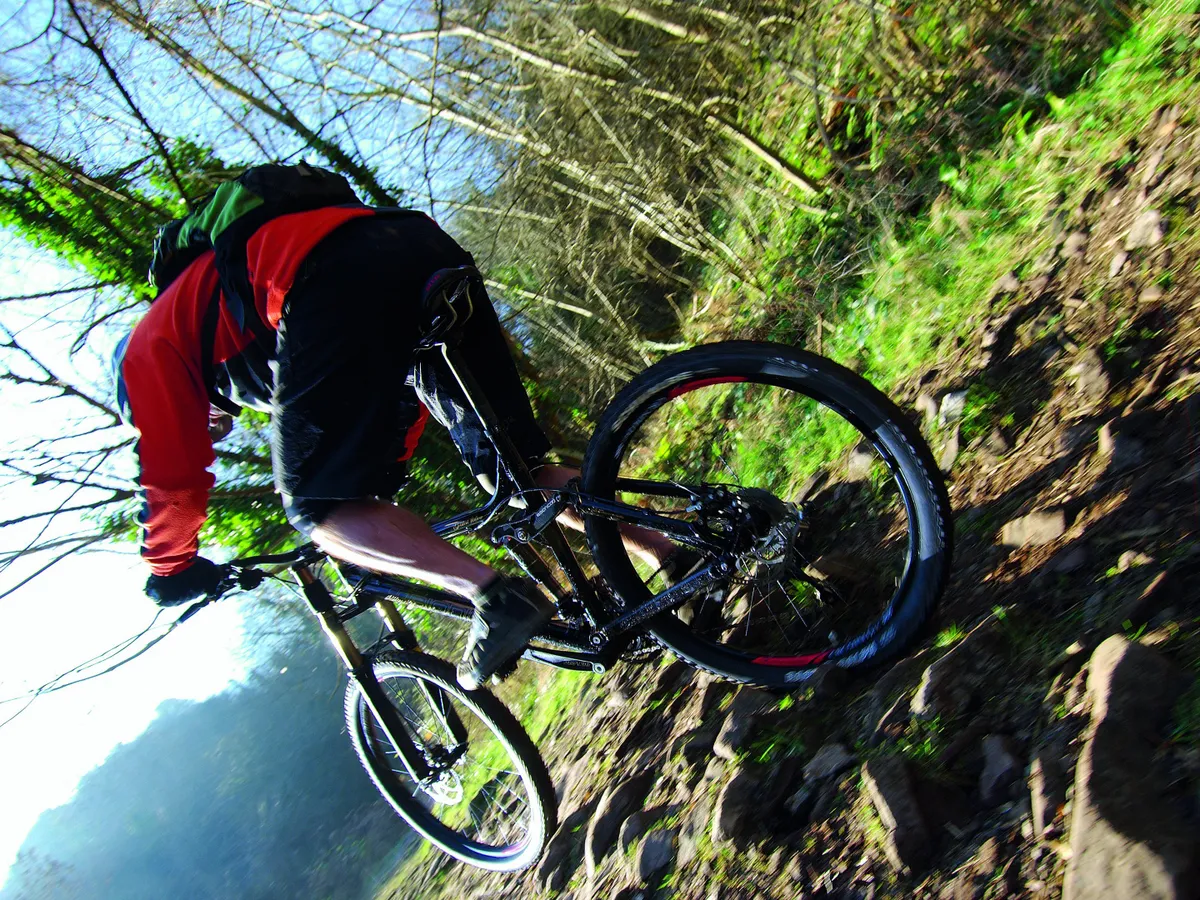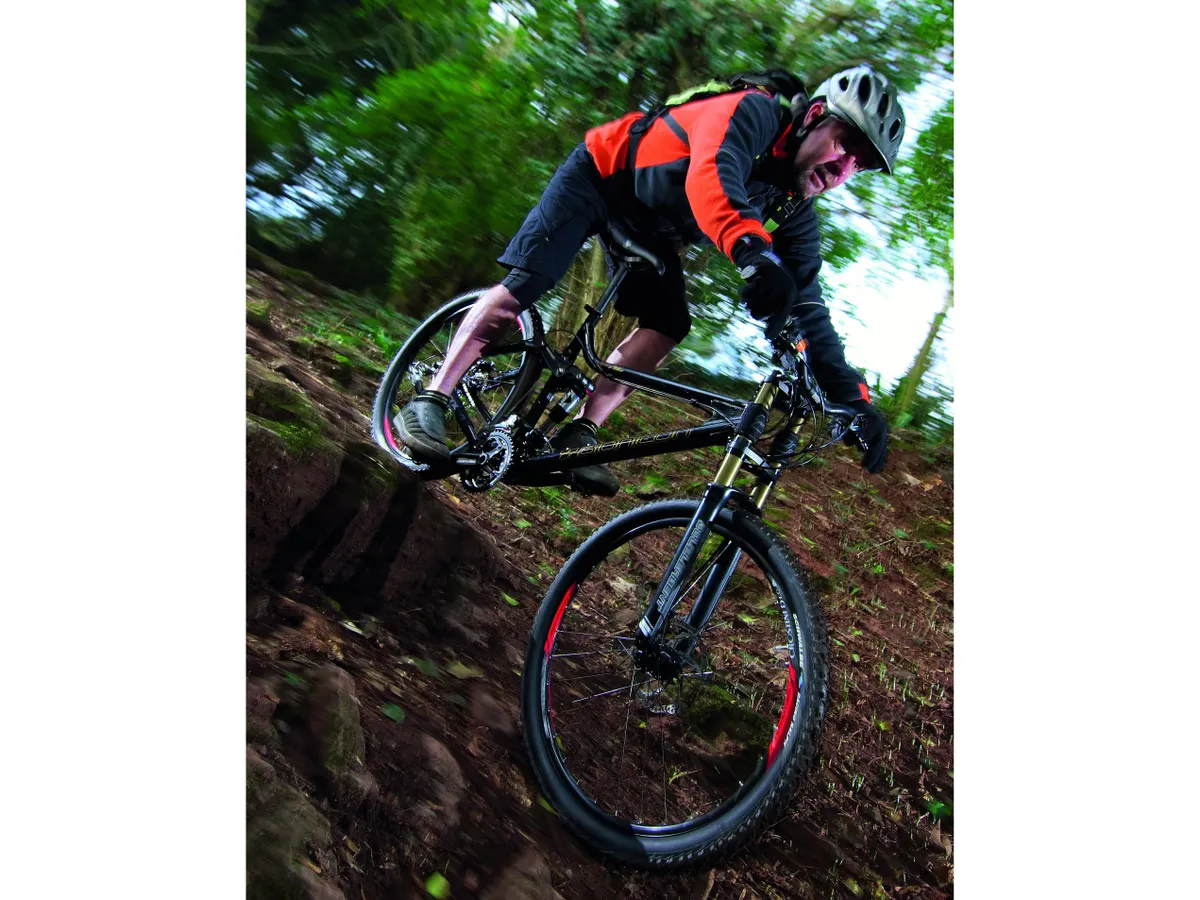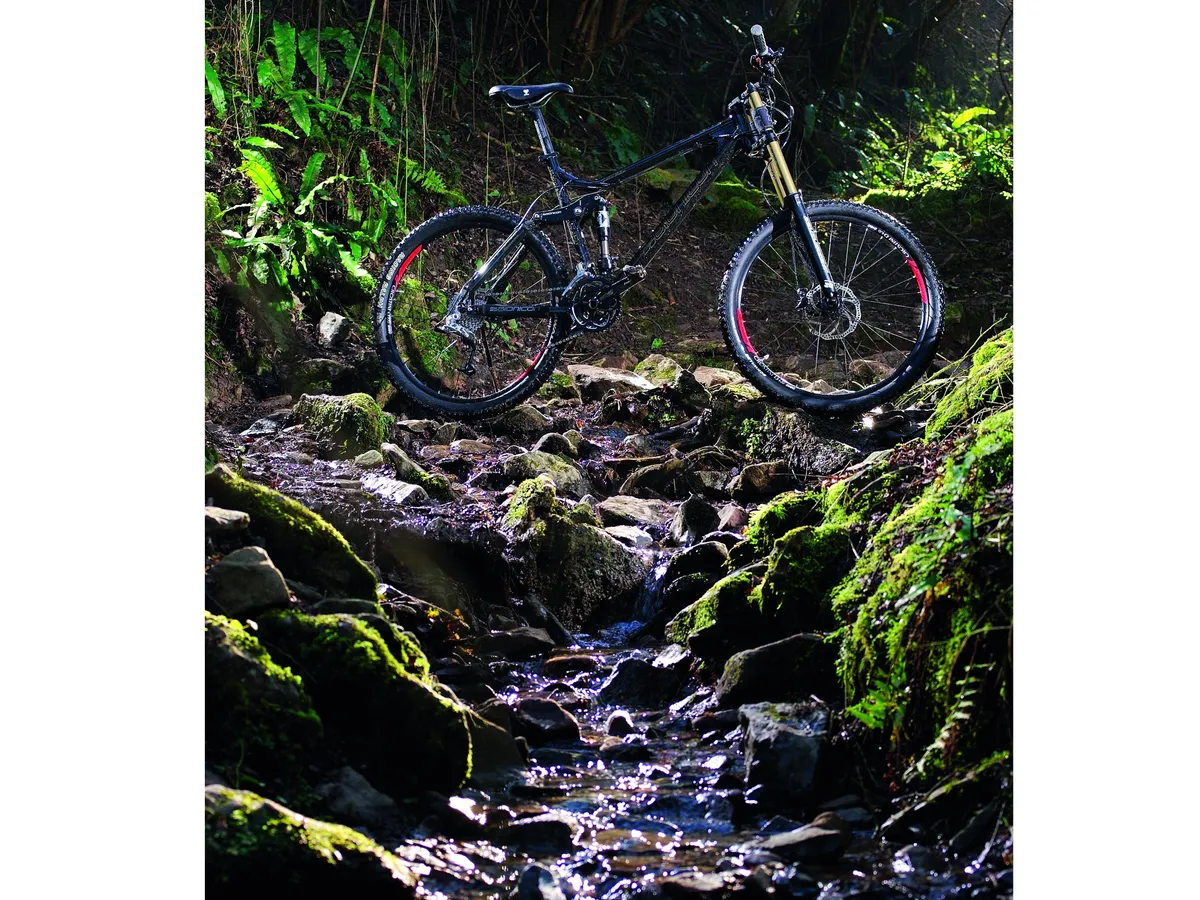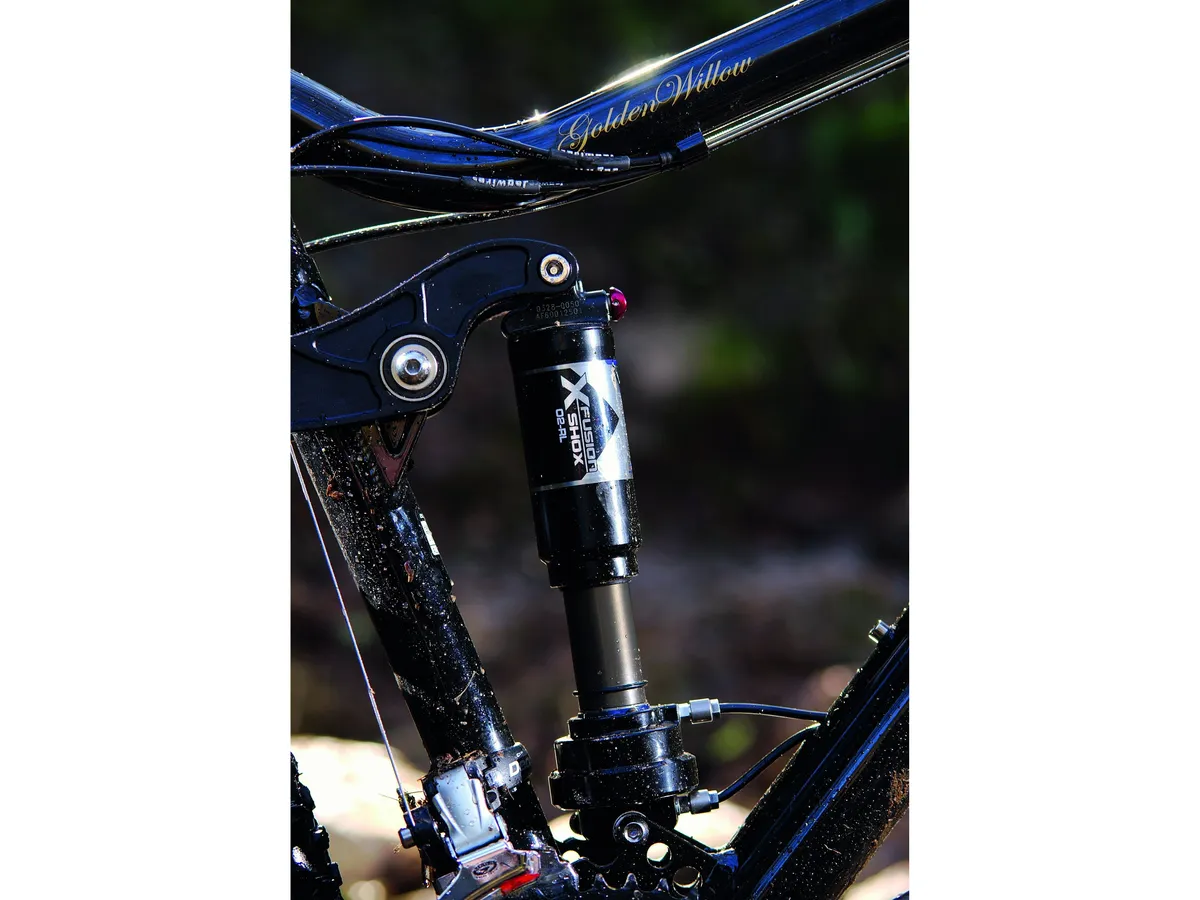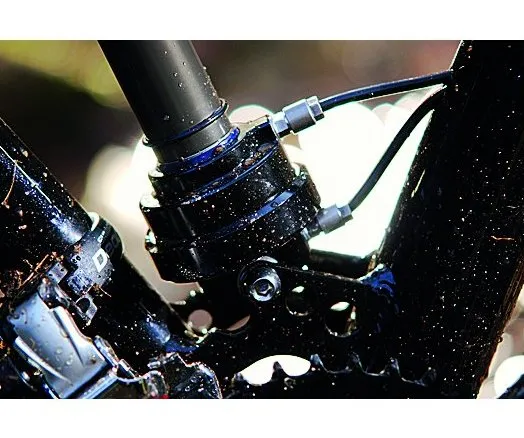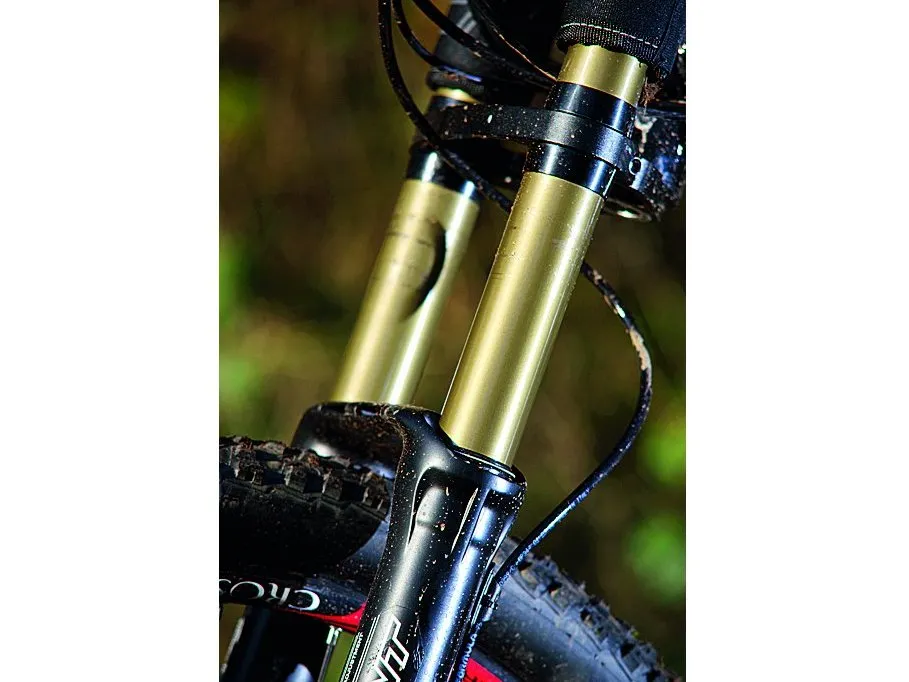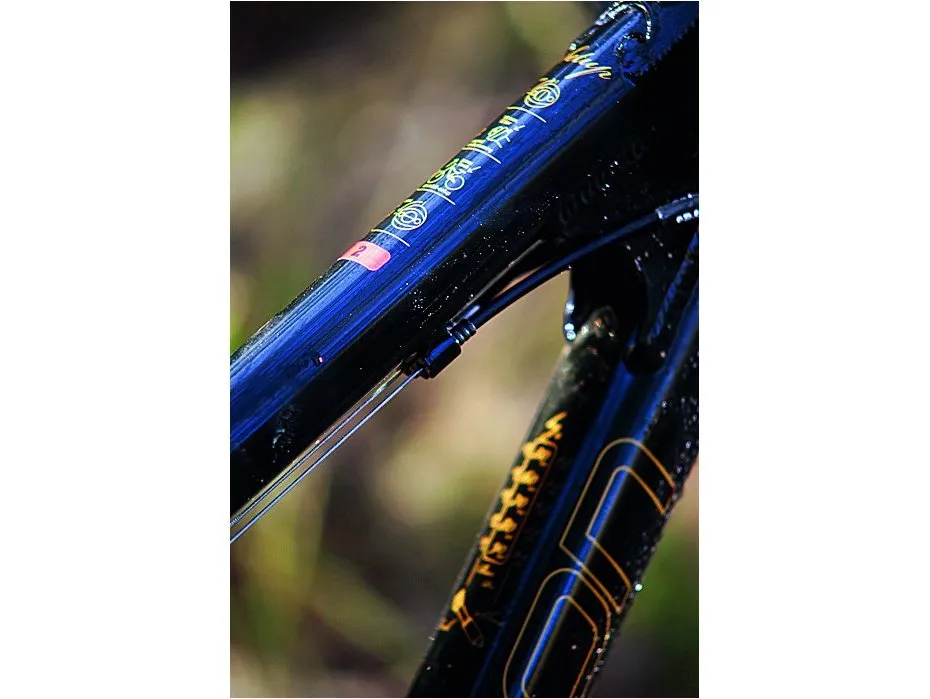Since the beginning of mountain bike history the search has been on for one bike that can do everything. Bionicon seem to think they've designed it. We've been riding their Golden Willow XC rig for the last few months, trying to find out.
Beach cruiser skeletons became mountain bikes because Gary Fisher and all those inspired pioneers started to add gears, decent brakes, knobbly tyres and a better riding position. They thought they'd cracked it - one bike for all types of off-road riding. And of course, by the standards of the day, they had, but goalposts always move. Designers and riders constantly strive to make better products. Frame geometry keeps changing, weights drop, suspension systems evolve, marketeers start introducing labels like freeride or all-mountain, and the performance expectation ball game changes over and over again.
So, what we need now, as ever, is a bang up-to-date bike that can handle singletrack, descents and climbs with as much ease, excitement, grace and finesse as the specialist machines. Can there be such a thing?
Best compromise?
Of course, what we're actually looking for is the same as we've always been looking for: the best possible compromise within the confines of the technology and information currently available. Everyone will have their own ideas of what that is, but 'Vorsprung Durch Technik' Germans Bionicon have come up with something that comes pretty close to ideal for many riders who've spent time with it.
It's a frame and fork system designed to work together. OK, you say you've heard it all before, but this one is different. Instead of doing the usual thing of independently changing the front and rear suspension characteristics, the Golden Willow focuses on changing the frame's geometry. The unique pneumatic geometry adjustment system can shift the seat and head angles by up to five degrees simply by shuttling air between the fork and the rear shock via an air reservoir, independent of the fork and shock internals. This system doesn't affect the fork and shock spring rates, or the rear suspension travel or bottom bracket height.
Wonderful workings
So how does it work then? Well, the air being shuttled lengthens the fork as you tip the bike back for steep drops and shortens it as you tip it forward for steep climbs. You do this by pressing a single button on the handlebar and shifting your weight backwards or forwards. The geometry changes, from slack for drops to steep for climbs, or anything in between, but the shock travel is constant. All of this can be done on the move. Press the button on the bar to open the reservoir then shift your body weight to make the required changes before letting go of the button. You get used to it very quickly. But is the Bionicon approach actually any better on the trail than the many other all-mountain bikes out there?
One bike for everything?
The all-mountain tag has been growing in popularity over the past few years. It's essentially a marketeer's description for medium travel full suspension bikes that don't weigh too much - think 28 to 34lb, depending on what you want to pay. Obviously, there are loads of variations within the genre, as well as loads of discussions about whether all-mountain means more to anyone than freeride lite or any other tag attached to a bike that lets you tackle pretty much any type of terrain, from radical ups and downs to everything in between.
Most other 'adjustable' bikes rely on forks having lockdowns for steep climbs or variable travel for different types of terrain. In almost all cases, the lockdown and adjustability results in a totally different spring rate and different ride feel to the fork. The same applies to the many and varied adjustable rear suspension systems. Most of them just change the way the shock responds, while some have different positions for the shock mounts that slightly change the geometry. Some geometry change set-ups can be adjusted on the move by lengthening/shortening the rear shock but you still have to adjust the fork settings separately, and two separate adjustments on the move will make you not bother if you can get away with leaving them as they are.
True solution?
So Bionicon have found a solution. But, cynics ask, "a solution to what?" Is it really a good thing to keep the shock travel or spring rate the same whatever type of terrain you're on? What about bottom bracket height? Some riders say they prefer lockout forks and a shock that changes the bike's bottom bracket height at the same time as changing suspension feel. Well, Bionicon say they're working on lockouts. Meanwhile, there's something nice about having a big orange button on the handlebar that instantly adjusts your frame geometry for steep ups and steep downs.
THE TEST
The Golden Willow is a four-bar linkage offering with 120mm (4.7in) rear travel and fork travel varying between 70 and 140mm. (2.8-5.5in). There are other bikes with adjustable suspension travel and adjustable geometry but, as far as we're aware, Bionicon is the only company that offers a set-up where a single button on the bar adjusts everything at once so that you can instantly set yourself up for radical descents, or climbs, and every terrain type in between. Too good to be true? That's what we thought initially, but we've been riding this bike for a couple of months now and we've learnt to love it.
The basic function involves shunting air between the fork and the shock. Two air lines run inside the down tube, and when you press the button on the bar you allow air to move between the fork and shock. If you press the button and lean back, the back end drops and the fork lifts, slackening the geometry for steep drops. If you press the button and lean forward, you compress the fork and lift the back up, setting the geometry up for steep climbs. Or let it settle in between.
The head and seat angles can shift between a slack 67 and a super steep 74 degrees. The really clever thing though is that, as the geometry shifts, the bottom bracket height and suspension feel stay constant. This is because the movable air is kept separate from the air used to set the fork and rear shock's performance, in terms of spring rate. Like most bikes of this type, you dial in around 25 per cent of the travel as sag by adjusting air pressures. The rear shock has a very effective rebound damping lever, but everything else is factory set.
The frame has a highly effective Horst Link four-bar back end and a surprisingly light tripleclamp air fork. Full bike weight is about 29lb but the special steep climbing geometry and superb traction help it to keep up with lighter bikes. At the other end of the scale, the slack head geometry option and maximum 140mm fork travel make it possible to stay with the downhillers on all but the gnarliest drops. The adjustable bar/stem set-up also adds a lot to the bike's adaptability.
Bionicon also make a singlepivot, longer travel Edison (see issue 209) and two heavy-duty bikes for more radical riding. The Golden Willow, also available with a more upmarket, lighter spec, is designed as a thoroughly adaptable crosscountry bike. There are slightly lighter bikes that do the allrounder thing pretty well, but we've never comes across one that handles both steep climbs and steep drops quite as well as this. At least, not at this price.
The more time we spent with the Golden Willow, the better it felt. It takes a few rides to get used to the idea of push-button geometry shifts, and how to get the best out of them for all trail types, but when you do, you might wonder how you lived without such a function.
The verdict
As well as being completely unique in its design approach, the Bionicon Golden Willow is also the most adaptable allmountain bike we've ever tested. It tackles steep ups and steep downs as well as most specialist machines and in its steady riding setting it tames technical singletrack as well as any other £2,000 medium travel full susser.
So, are there any downsides? Well, there are bound to be riders who feel reluctant to buy into a complete frame and fork package with air hoses linking them. You could still spec the frame with another fork and shock but that would be missing the point. The instantly adjustable geometry is a great 'solution' for terrain that includes steep and technically difficult ups and downs. The fact that you can run either 70mm or 140mm of fork travel without upsetting the bike's bottom bracket centre of gravity is an extra bonus. Expect to see a few Bionicons on UK trails soon.
Call Bionicon UK on 01202 518069 or go to www.bionicon. com to get your hands on one.
GEOMETRY LESSON
Angles of attack
Downhill bikes have slack frame angles because you really don't want your body weight to be too far forward on the bike when you're going down. If there was such a thing as an uphill bike, it would have steep frame angles because you want your body weight to be well forward if you're trying to pedal up a steep hill.
On normal cross-country bikes we try to mimic the effect of slack angles for steep descents by hanging our weight off the back of the saddle. And on steep climbs we shift our weight over the saddle nose and crouch down towards the stem. Most cross-country bikes are based on a working geometry (suspension sagged and working normally) of a 71-degree head angle and a 73-degree seat angle.
At the push of a button, the Bionicon Golden Willow shifts between a slack 67-degree head angle for steep descents and a steep 74- degree head angle for steep climbs, or anything in between for steady riding. Fork travel varies between 70 and 140mm, and the rear shock is a constant 120mm.
CLIMB EVERY MOUNTAIN
Bionicon terrain
So where is an all-mountain bike like the Bionicon at its most useful? Obviously, you don't have to climb a real mountain to get the best out of it. However, it's on long climbs where you can really get stuck into the pedalling advantages of climbing geometry. Short grunter climbs are easily accomplished on most other bikes without worrying about frame angles, but sit-down-and-pedal climbs are a real haul on bikes with the slackish compromise geometry that typifies other all-mountain rigs. Similarly, steep descents are far more easily accomplished with a slack 67- degree head angle and slightly compressed back end than they are with the typical 69-degree head angle of other all-mountain bikes.
THE LIGHT FANTASTIC
Weight Issues
The heavier incarnations of all mountain bikes weigh 15.9kg/35lb or so. Above that you're moving into the freeride arena, with the emphasis more on enjoying the downs. The lighter all-mountain bikes can weigh as little as 11.3kg/25lb if you really throw money at the components and, in particular, at the wheels and tyres. Think carefully about what you actually need before you shed all that cash though. While wheel and tyre choices will make a bigger difference to the way a bike accelerates and climbs than anything else, wheels and tyres will also be the first components to crumple and burst if you hit the boulder fields a bit too hard on the way back down.
As a rule, go for a big-profile middleweight wheel and tyreset if you ride hard. Save a little extra weight, and banish punctures, with liquid latex-based tubeless tyre conversions like Stans No Tubes. With the choice of hard hitting air forks and shocks now on offer, plus lots of lightweight but still tough finishing components, you can expect to end up with a sub 30lb all mountain bike that's ideal for Alpine ups and downs.
THE BIONICON EXPLAINED
One big button
There's something inherently satisfying about having a single big button on the handlebar that adjusts both the fork and the rear shock so the bike can tackle the steepest climbs and drops.
Two-part shock
The rear shock cylinder extends and compresses to change the geometry of the bike while keeping the bottom bracket height static, but the suspension feel remains the same.
Integrated frame/fork
The fork and the rear shock are linked by two pneumatic hoses that shunt air between the front and back of the bike. Instructions on what to do are on the top tube. It's intuitive after a couple of rides.
Unique fork design
Fork travel, which varies between 70 and 140mm, is set using the button on the handlebar. The action is always plush but you can set the characteristics to suit your weight and riding style.
